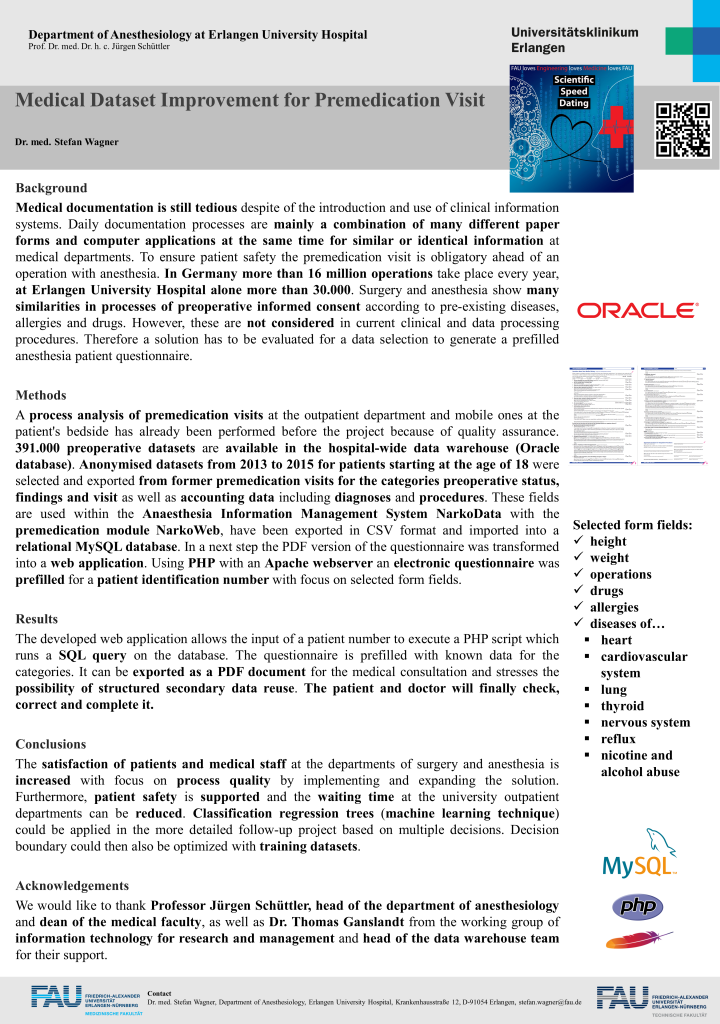Das Projekt „Elektronische perioperative Risikoevaluation“ unter der Leitung von Dr. med. Stefan Wagner, MHBA ist der übergeordnete Rahmen für dieses Teilprojekt. Ergebnis des erfolgreichen Projektabschlusses im Zeitplan und im Kostenrahmen war ein funktionaler Low Fidelity Prototyp.
Details zu verwendeten Techniken des User Experience und User Interface Designs
Nachfolgend ist das Poster, welches begleitend zum Projektabschluss vorgestellt wurde, veröffentlicht.
Background
Medical documentation is still tedious despite of the introduction and use of clinical information systems. Daily documentation processes are mainly a combination of many different paper forms and computer applications at the same time for similar or identical information at medical departments. To ensure patient safety the premedication visit is obligatory ahead of an operation with anesthesia. In Germany more than 16 million operations take place every year, at Erlangen University Hospital alone more than 30.000. Surgery and anesthesia show many similarities in processes of preoperative informed consent according to pre-existing diseases, allergies and drugs. However, these are not considered in current clinical and data processing procedures. Therefore, a solution has to be evaluated for a data selection to generate a prefilled anesthesia patient questionnaire.
Methods
A process analysis of premedication visits at the outpatient department and mobile ones at the patient’s bedside has already been performed before the project because of quality assurance. 391.000 preoperative datasets are available in the hospital-wide data warehouse (Oracle database). Anonymised datasets from 2013 to 2015 for patients starting at the age of 18 were selected and exported from former premedication visits for the categories preoperative status, findings and visit as well as accounting data including diagnoses and procedures. These fields are used within the Anaesthesia Information Management System NarkoData with the premedication module NarkoWeb, have been exported in CSV format and imported into a relational MySQL database. In a next step the PDF version of the questionnaire was transformed into a web application. Using PHP with an Apache webserver an electronic questionnaire was prefilled for a patient identification number with focus on selected form fields.
Results
The developed web application allows the input of a patient number to execute a PHP script which runs a SQL query on the database. The questionnaire is prefilled with known data for the categories. It can be exported as a PDF document for the medical consultation and stresses the possibility of structured secondary data reuse. The patient and doctor will finally check, correct and complete it.
Conclusions
The satisfaction of patients and medical staff at the departments of surgery and anesthesia is increased with focus on process quality by implementing and expanding the solution. Furthermore, patient safety is supported and the waiting time at the university outpatient departments can be reduced. Classification regression trees (machine learning technique) could be applied in the more detailed follow-up project based on multiple decisions. Decision boundary could then also be optimized with training datasets.

